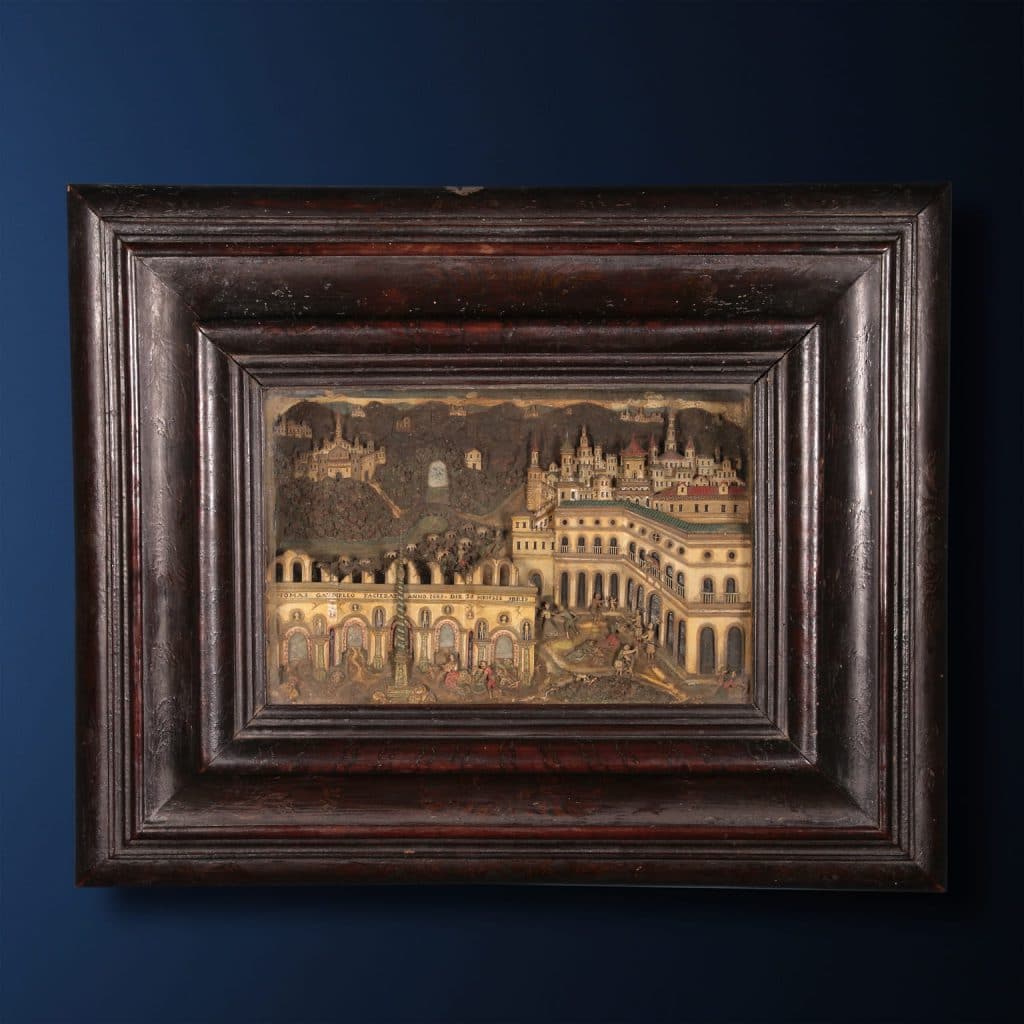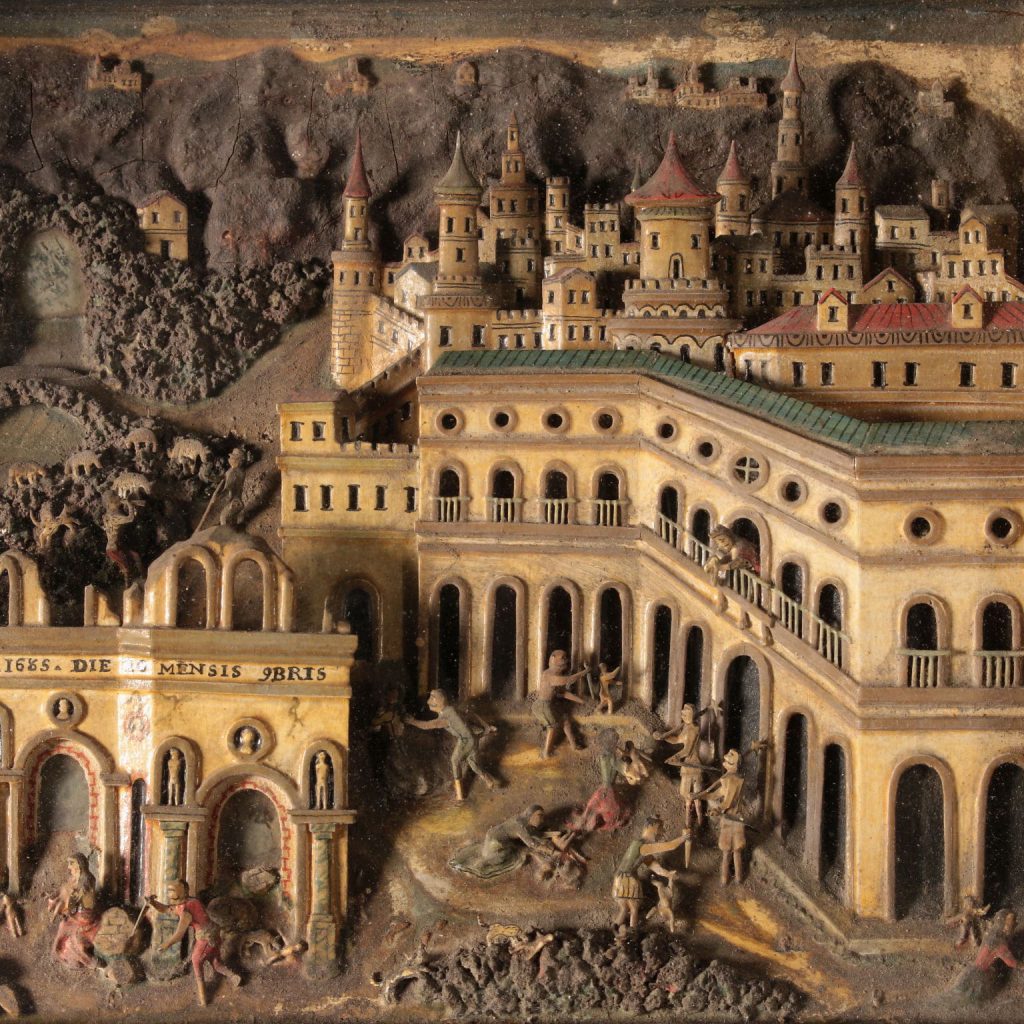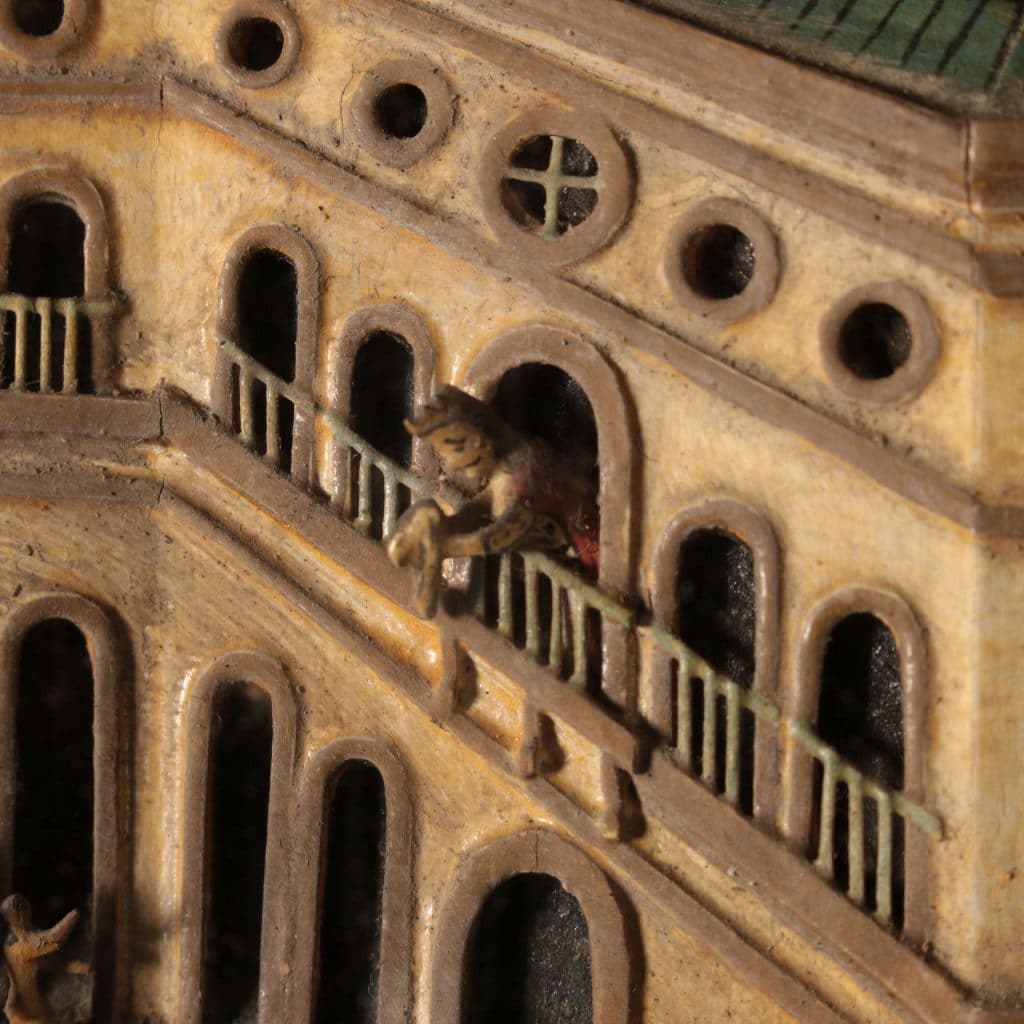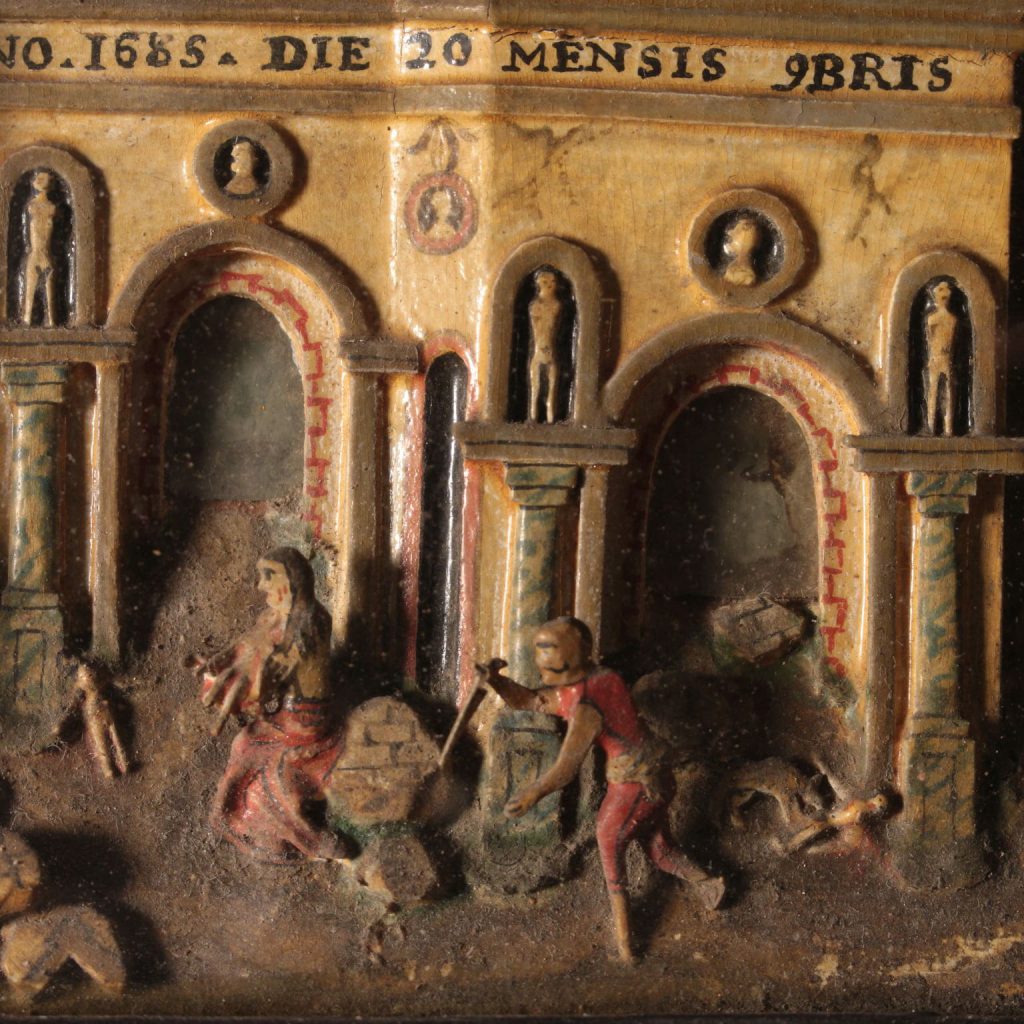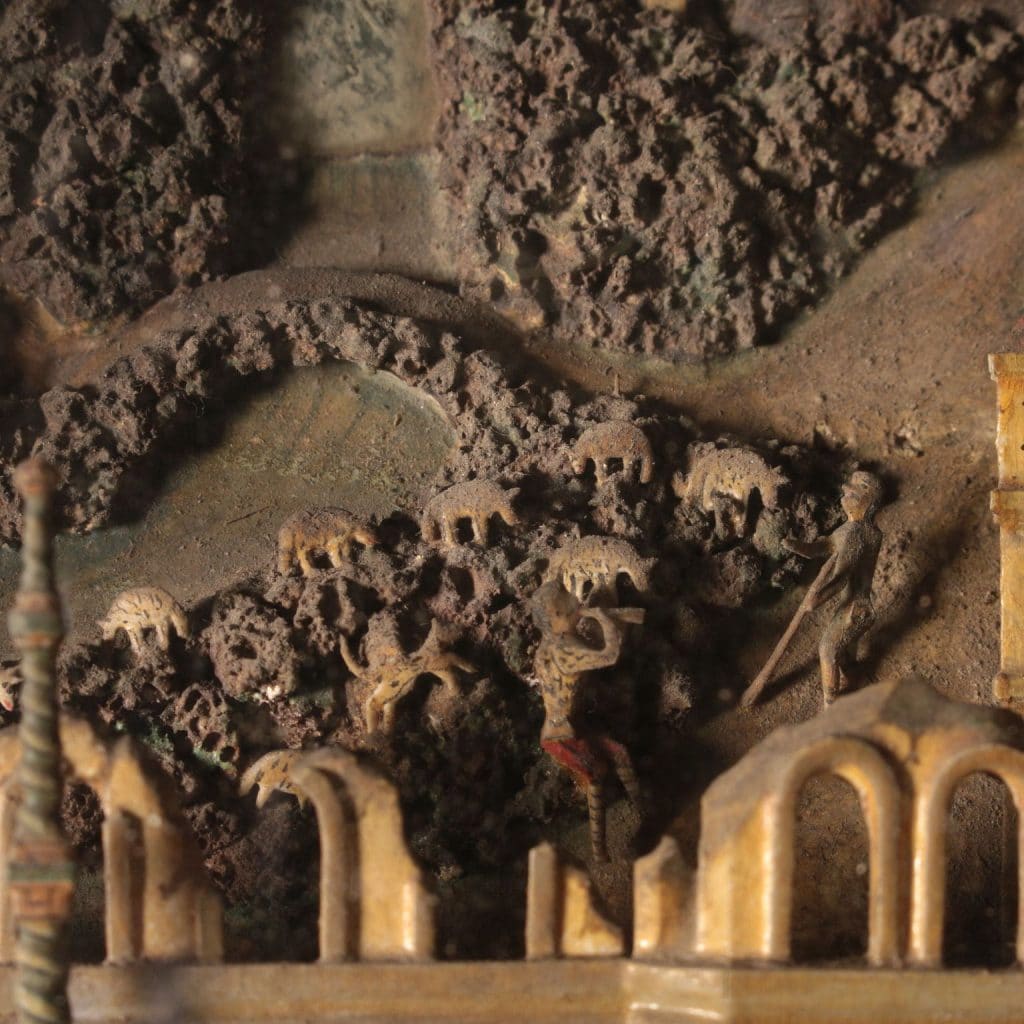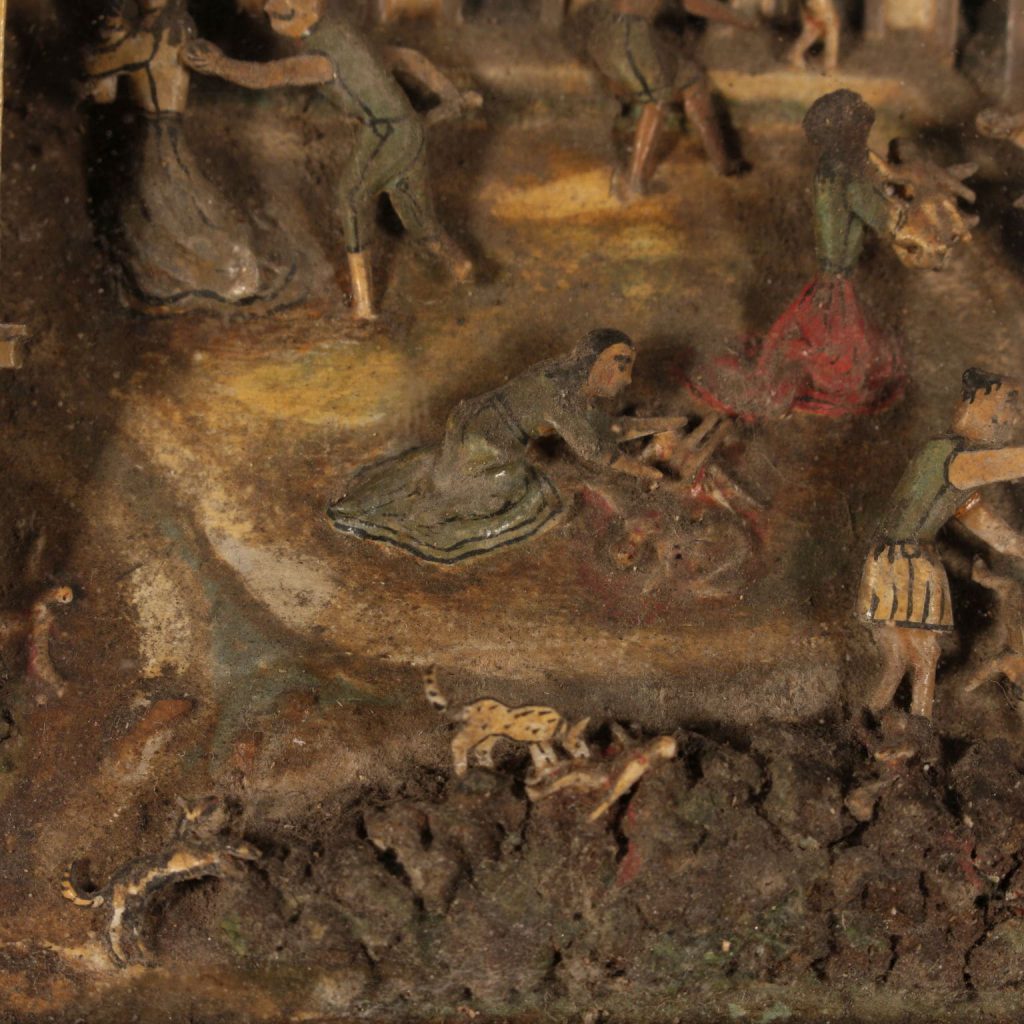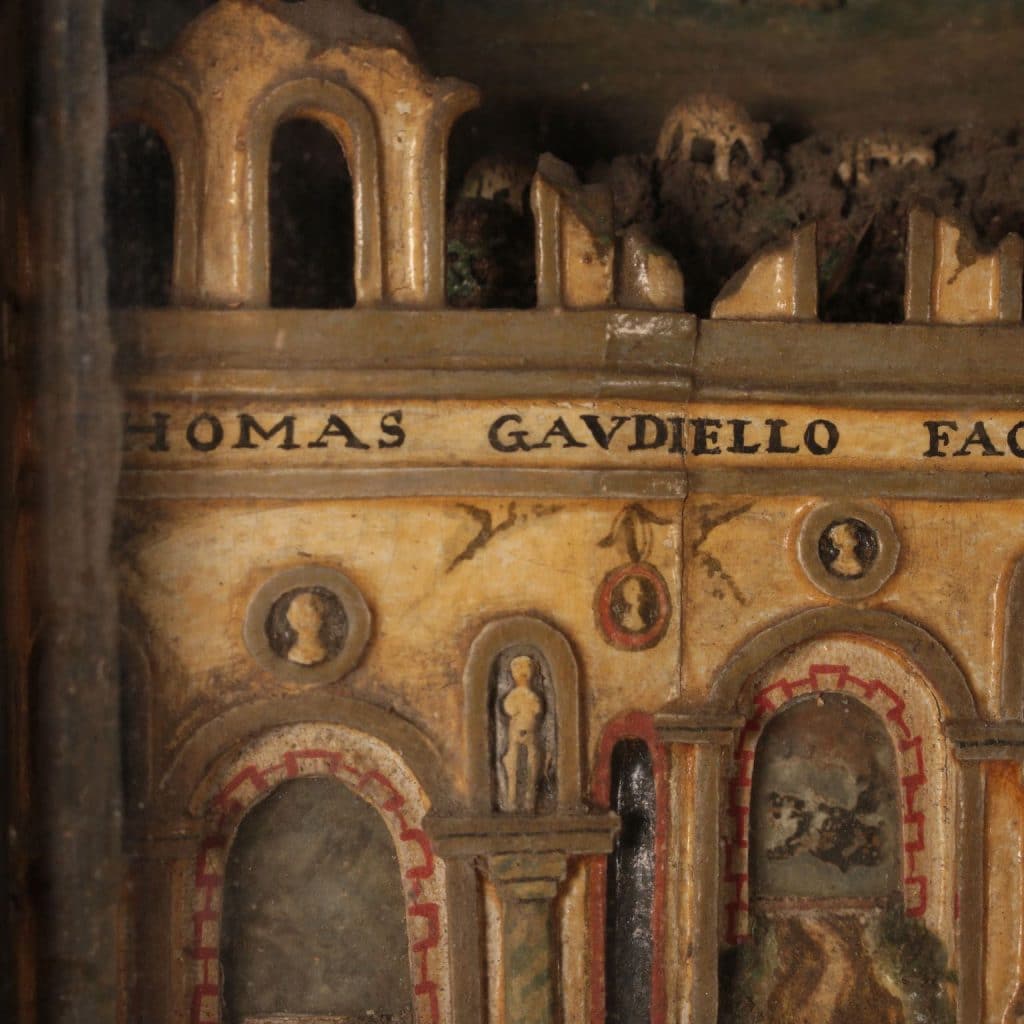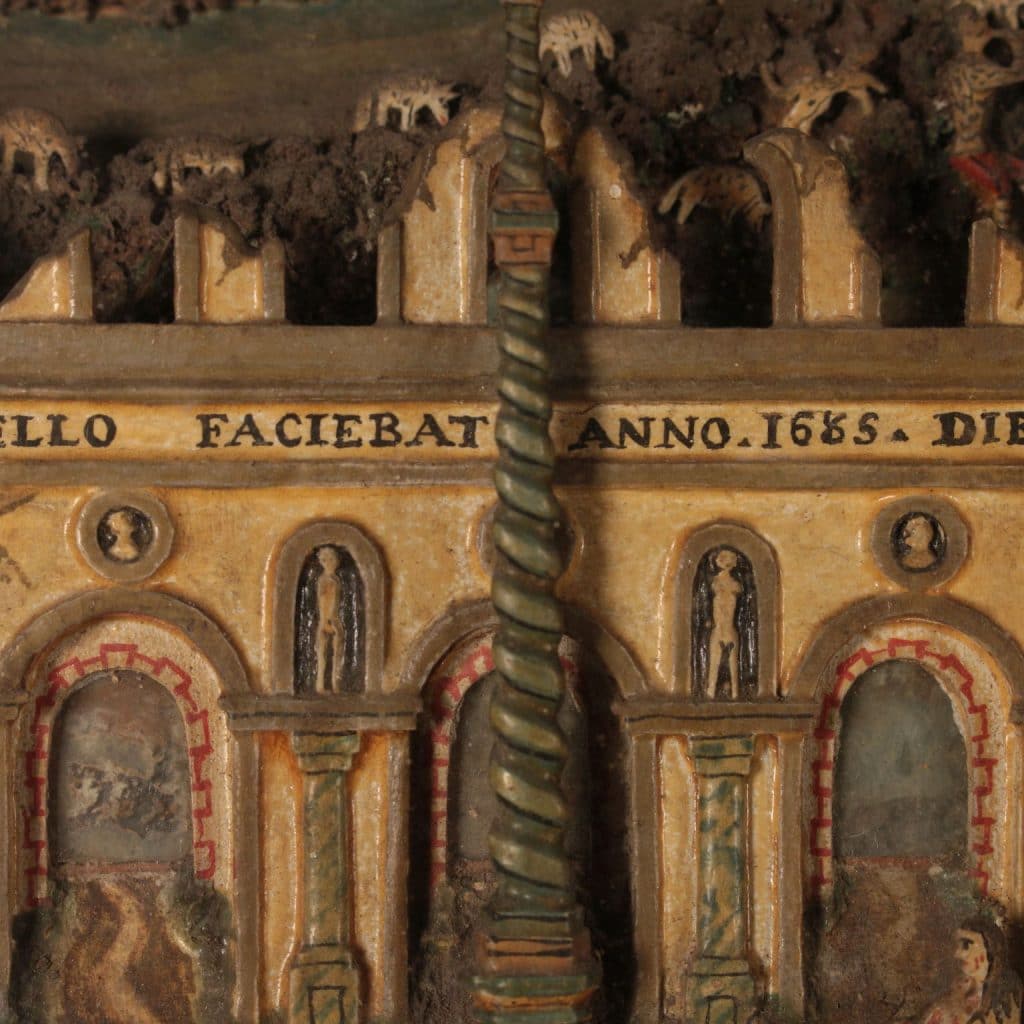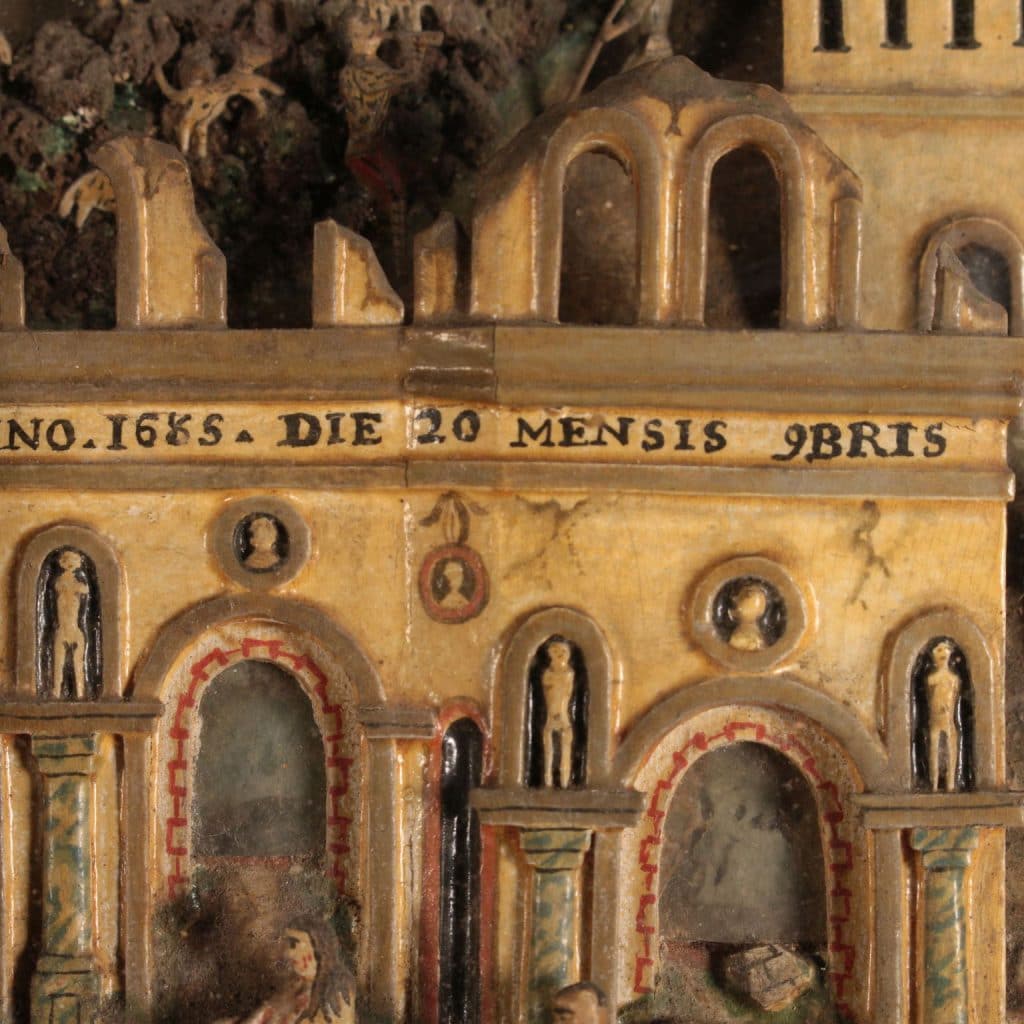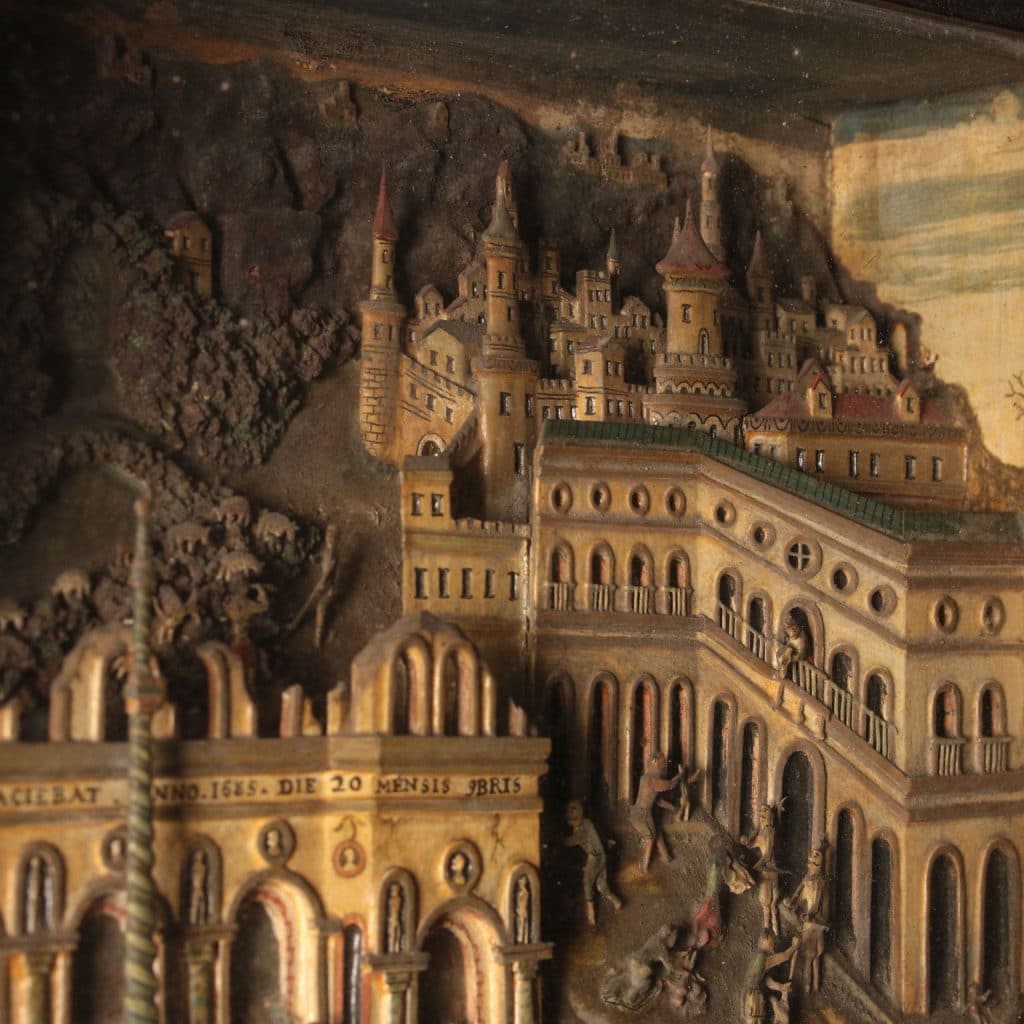High relief “Massacre of the Innocents” – Thomas Gaudiello, Naples, November 20, 1685
Thomas Gaudiello
November 20, 1685, Naples
Description:
Three-dimensional panel depicting the Massacre of the Innocents.
High relief that refers to the story in the Gospel of Matthew: King Herod, who, following the visit of the Magi, learned of the birth of a legitimate king of Israel, decided to intervene drastically by ordering assassins to walk the streets of Bethlehem, track down children under two years of age and kill them.
The scene is therefore set in Bethlehem in the square facing the palace of Herod the Great.
In the foreground on the left a building with a broken profile, on two levels, with a central body and two projecting side parts: perhaps a building or more likely an access door to the city.
In fact, in the lower part there are 5 lowered round arches made internally with small mirrors framed by geometric motifs and surmounted by circular decorative elements with portraits – which seem to be real passages through the streets of the city. The facade is embellished with pilasters surmounted by statues inserted in niches. The invoice of the semi-columns recalls that of the central obelisk of the square. In the part of the junction between the main body and the two sides, two small black niches bordered in red are visible, surmounted by two red portholes decorated with human portraits.
In the band between the two moldings – above the arches – we find the inscription “Thomas Gaudiello Fabiebat Anno 1685 Die 20 Mensis 9bris”, ie the author and date of the realization of the high relief. Of the upper part of the building only parts of partially destroyed arches remain.
In the space in front of the building, the tragedy takes place around the central column – built in a twist on a multi-step base.
The scene of the massacre is convulsive: soldiers in the service of Herod turn up, armed with swords and daggers, women and children; mothers intent on fleeing to save their children; bodies of lifeless babies on the ground; dogs intent on tearing apart small corpses.
In the high relief, always in the foreground, but on the right, the Palace of Herod the Great. The multi-body building is represented on several floors: a portico follows the development of the building on the ground floor; on the first floor a series of arched windows with balconies, finally a series of circular openings. The symmetry of the compartments in the different levels – arches and portholes – is perfect. The main body has five openings per floor, one of which is larger in the center; the body behind the walls has four arches and the one behind the cornice two. The continuation of a wing of the building painted in the inner part of the frame should be highlighted.
In the square in front of the Palace, the massacre is particularly grim: at the entrance, at the main arch, two armed guards; Herod looking out from the balcony in the act of throwing a newborn baby; soldiers who chase children by grabbing them by the feet or tearing them from their mother’s arms; heaps of rubble mixed with bodies. The use of the color red is recurrent, both for the clothing of women and soldiers and for macabre details: on the ground the blood shed testifies to the terrible act performed.
In the background the city walls, with palaces, houses and churches distributed on various levels. The construction is particularly detailed: to highlight the decorations of the facades, the battlements of the towers and bastions, the refinement in the rendering of the roofs and windows. Also in this case the use of red and green colors is recurrent.
Behind Bethlehem, the environment is hilly and in the background there are some isolated houses, palaces, churches and the Castle of Herod. The panel is enriched by a scene of pastoral life: on the hills that form the background of the city a flock is represented accompanied by a shepherd and a flute player. The valley is crossed by a river that separates the pastures from the hill on which Herod’s fortress stands: a bridge acts as an access to the staircase leading to the castle. The fortress-palace is protected by a wall with bastions and watchtowers.
The contemporary frame of the work is carved with a large molding that allows a space to contain the work, it is completely painted with leaf motifs partially covered by the patina of time.
CODE: ANTOGG0002293
Thomas Gaudiello Biography:
Active in Naples between 1685 and 1727
Wood sculptor and laminator, Gaudiello is known today from the very rare specimens of three-dimensional high-relief panels in wood and polychrome stucco depicting views of important cities.
Preserved in international museums and private collections, among the most important we can mention the two views of port cities at the Museum of Fine Arts in Boston, dated 1726 and 1727, a view of the city of Naples in Romania during the Venetian conquest of 1686, signed and dated “THOMAS GAUDIELLO FECIT ANNO 1688”, today at the Convent of the Sisters of the Visitation of San Bernardo in Madrid. Together with these works we can remember a view of Naples in a Neapolitan private collection.
- High relief "Massacre of the Innocents" - Thomas Gaudiello, Naples, November 20, 1685

Antiques, Art and Design
FineArt is the new ambitious Di Mano in Mano project that offers an exclusive choice of antiques and design works, presenting them for their singularity and uniqueness.



